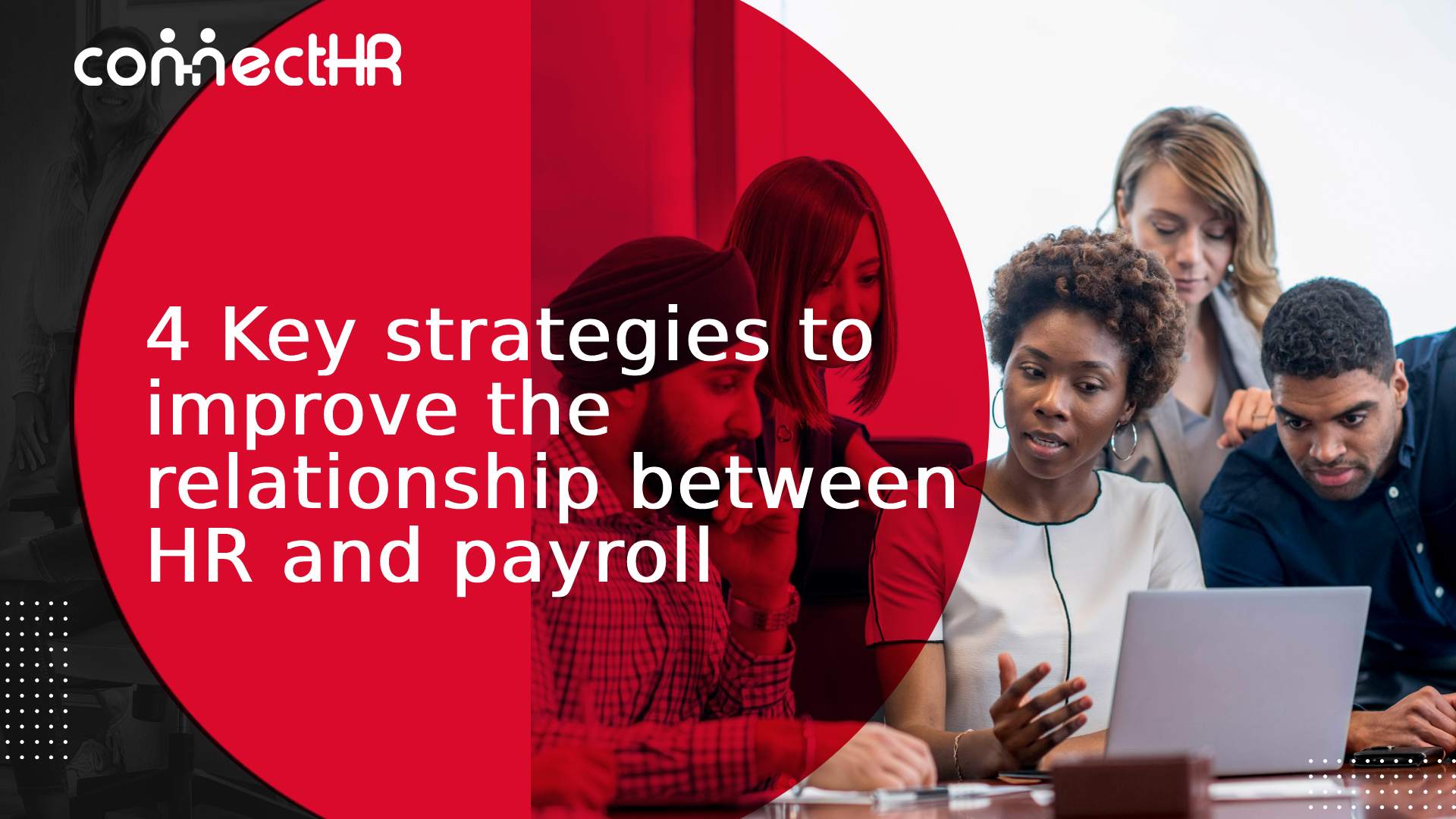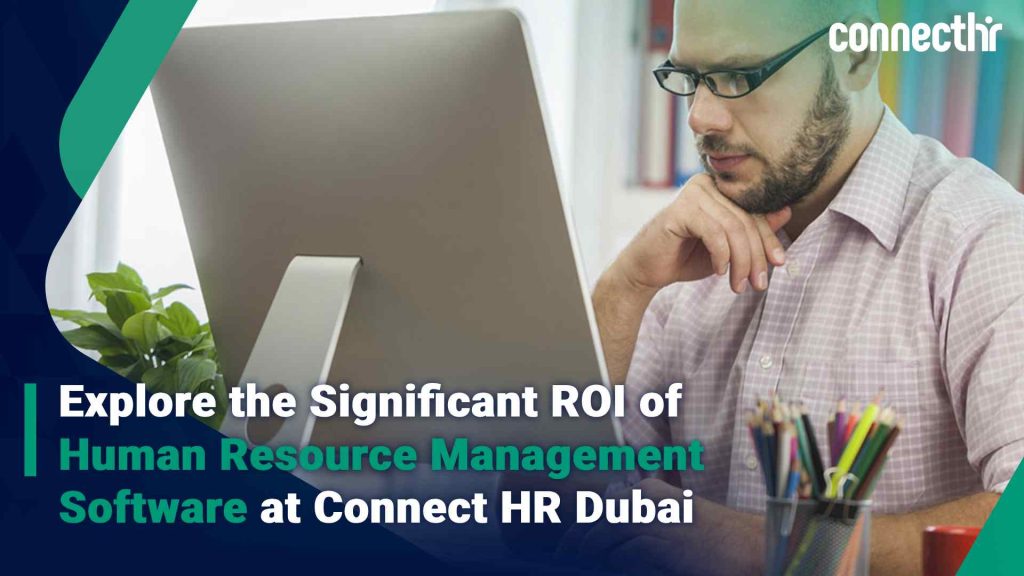We have spoken about the value of workers in the workplace before. Companies will throw everything away if the two do not collaborate. It is essentially the same thing with HR and payroll software. Without the control of the other, neither department could perform successfully. As a result, it is critical to discuss some tactics for improving the two’s connection.
In this article, here on Connect HR, we will discuss four ideas for improving the HR payroll interaction. With more than 20 years of expertise, we have extensively examined both business processes to optimize the HR-payroll link. From organizational relevance to functional tactics, it is everything here. As a result, we will discuss the following:
- What is payroll?
- What department should payroll belong to: Finances or human resources?
- Which is the connection between HR and payroll?
- How meaningful is the relationship between HR and payroll?
- Which strategies should you apply to improve the relationship between HR and payroll?
- Do you need HR and payroll software in your organization?
- Improve the relationship between HR and payroll and increase your company’s productivity
1. What is payroll?
You may not know what payroll is unless you are a finance specialist or have a backstory in human resources. Nonetheless, understanding the phrase in a very competitive business industry is crucial and necessary. If you are a business owner or an HR staff member, it is necessary payroll expertise.
In a few words, payroll is the procedure of compensating a company’s employees as a reward for their hard work over a day, week, month, or year. Payroll comprises several internal processes that ensure that this critical business activity is carried out appropriately in each corporation.
The following are some of the most important internal processes: gathering the list of personnel for remuneration, recording all work hours, estimating the employee’s compensation, distributing the payment, etc. As you might think, accurate payroll processing necessitates a significant amount of labor behind the scenes. The adage that payroll is just about calculating paychecks is no longer valid.
This is because, as previously said, it is a collection of procedures that necessitates the participation of several departments. As a result, it possesses a surprising level of intricacy. As a result, many businesses use digital payroll systems to simplify payroll calculation and management.
2. What department should payroll belong to: Finances or human resources?
Payroll processing involves numerous departments, as described in the preceding paragraph. Typically, the payroll department is in charge of the company’s vital management. Due to the general processes involved in payroll management. The financial department, on the other hand, is involved.
Understanding how many firms relate to payroll is the first step in bringing together HR and payroll. The Finance department now handles payroll in certain firms, while the human resources department in others deals with it. There is no agreement over which department must be in charge of payroll. It is, nevertheless, vital to define who will be in the order of payroll.
The finance department comes into play when discussing a massive corporation with a large staff. Payroll is almost every company’s most significant single expenditure. Because it entails transferring funds from the company’s bank accounts, withholding required taxes, and calculating benefits, among other things. Companies will need experts from the financial department in this scenario.
However, in most circumstances, the HR department will be in charge of this management. All are owing to HR’s ability to offer the data and processes needed for payroll. As a result, HR and payroll in today’s firms are more intertwined than ever before.
3. What is the connection between HR and payroll?
HR and payroll are two completely separate things; however, they are linked simultaneously. They are linked through the people they hire, train, and pay. Payroll management, for example, necessitates processing payments and calculating taxes regularly. HR maintains track of employee hours, wage changes, financial incentives, and other factors to do so.
In day-to-day HR management, all of these factors, as well as others, are required. Why is this the case? Business owners can find the solution in the organization’s most valuable and vital asset: its workers. It is critical to adequately compensate employees for their efforts to retain the company’s culture. This will be mirrored in the organization’s production and effectiveness.
Companies usually delegate payroll handling is sometimes to a separate department. The information is shared between both departments in this situation. The payroll department has all the data it requires to ensure that employees are paid accurately and on time. HR’s role is to provide a validation safety net to verify that payments are made following the budgets that have been set aside for them.
There is a significant connection between HR and payroll, whether a partnership between two departments or a single department conducting the management. This is why every company’s human resources and payroll departments must work well together. Employees will be given their pay on time due to this, and the company will guarantee that it is handled correctly.
4. How meaningful is the relationship between HR and payroll?
Many employees believe that payroll must be handled mainly by the finance department in 2022. This might be attributed to an HR department’s history of inadequate payroll administration. However, this does not have to be the case in most circumstances. Especially when we consider the vast data required for payroll that employees must retrieve from HR.
If we do not go logical, we will find that the payroll function similarly relies heavily on numbers. This offers a strong argument for including payroll within finance. However, there is a direct link between HR and payroll, and it may be more essential than you believe. As a result, we will discuss the significance of this interaction between the two.
Because the operations performed by each are so closely related, the link between HR and payroll is critical. Human resources play a crucial part in choosing how to compensate employees appropriately, and payroll is in charge of ensuring that reward management strategies are implemented.
This is a critical issue to consider while defining their roles and arguing for good working relationships. Aside from the monthly income run, the two engage in various other activities. Bonuses, turnover, hiring, leave, maternity/paternity pay, absenteeism, and other factors are all considered. All those are areas where a positive collaboration between both may result in a more effective and productive business.
5. Which strategies should you apply to improve the relationship between HR and payroll?
While HR and payroll may serve different purposes, as previously stated, they are related to the organization’s personnel. When you consider how these two are related, it becomes clear that payroll and HR represent two sides of the same coin. This is why payroll management is frequently delegated to the HR department in many firms.
As a result, it is the responsibility of the manager and executives to develop management techniques. As a result, to create such plans, it is critical to examine the data acquired from the organization. However, many SMEs and influential organizations do not have the resources or time to complete this task.
This is where Connect HR can help. For years, our HR and payroll software has aided in the operation of numerous enterprises. We have developed techniques to improve relationship management, whether it is through our HR management software or other services.
Both the HR and the payroll department will indeed be able to work together using these tactics. As a result, HR and payroll inside the company will improve. As a result, we will go through four of these tactics that can enhance the interaction between these two business units.
5.1 Establish data integrity expectations
HR is frequently on the front lines of employee data collection, subsequently fed into payroll. Like the information received from payroll, the data obtained from payroll includes practical measures for the HR staff. As a result, setting data integrity aspirations is critical to these two departments’ success.
Human resources departments should collaborate to develop a shared set of data guidelines to increase data integrity. Important information regarding data formats and auditing methods is usually preserved in common standards.
Creating a set of guidelines would aid in the movement of more consistent, high-quality data across HR and payroll systems, reducing errors and the time spent rectifying them. In this approach, having a single HR IT solution that covers both tremendously aids in ensuring that these requirements are followed.
5.2 Define the scope of roles and the division of responsibilities
The scope and duties of HR and payroll are blurring in specific firms. Clear roles and responsibilities are beneficial not just for the legality but also for ownership and responsibility. The clarity in this area also benefits from optimizing strategic effect for both parties concerned.
You may assist HR and payroll teams in meeting the demands of the modern workplace in this way. As a result, letting these teams collaborate to produce a process map is an excellent alternative for defining position scopes and duties. This can assist everyone in agreeing on the procedures each team is responsible for and where the areas of engagement should be.
5.3 Creating shared KPIs
Though HR and payroll teams may well have distinct objectives, they may construct a few shared KPIs to connect their teams around similar goals, allowing everyone in the business to work together.
Payroll problems caused by missed timecard information are a prominent example. Payroll wants to eliminate errors, while HR must ensure that workers are compliant with recording their hours worked. Examples like these, as well as many more, companies find them within the HR metrics.
5.4 Using HR and payroll software
Many firms use separate systems to manage HR and payroll procedures. Payroll and HR teams who want to strengthen their relationship can collaborate to find an end-to-end solution that manages both procedures in a unified automated system.
You can reduce manual workarounds, duplicate data input, and inadequate reporting with a single solution. Additionally, a modern, full-suite system will enable employee self-service options, reducing HR management complexity.
6. Do you need HR and payroll software in your organization?
An avalanche of digital HR solutions has hit the corporate sector. More than 65% of businesses around the globe use at least a digital solution to simplify their operations. In this manner, companies acquire a large number of advantages. As we end this article, we must address the most critical question: Do you require HR and payroll software in your company?
Although the most outstanding HR and payroll software can assist in bridging critical gaps, is it a sensible investment for your company? To gain employee buy-in and win finance, you will need to present a compelling business case. More precisely, you must list all of the tangible advantages it may provide to your company.
Similarly, this department can benefit from deploying payroll software similar to the HR departments. This is because they will be able to gather an enormous amount of data at the moment of payroll. The human resources staff, for example, will be able to acquire a vast number of data and KPIs using our WPS-payroll.
This is advantageous to both the human resources department and the organization. But why is it helpful? Here are some reasons why it will be so beneficial to businesses in 2022. These will make you realize why you should implement HR and payroll software. These are the reasons:
- Improve the data security in the organization
- Simplify and automate the onboarding process
- Ensures compliance with laws
- Streamlines the payroll process
- Decreases the amount of human error in payroll
- Self-service tools
- Metrics and data
- Absence and leave control
7. Improve the relationship between HR and payroll and increase your company’s productivity
HR and payroll software are a wise investment for any organization nowadays, especially those organizations that need to streamline processes and maximize their workday. This way, you can improve the relationship between both departments to achieve greater organizational productivity.
Connect HR offers you its range of digital HR solutions to achieve this, which helped our organization create the strategies mentioned above. Thanks to these solutions, and our 20 years of experience in the area, we are one of the leading providers in Dubai.
As described previously in the article, our WPS-payroll is the ideal option for bridging the gap between HR and payroll departments. It can help you enhance several aspects of the payroll process. Our HRMS, on the other hand, is the appropriate instrument for improving your human resources management. With our HR digital solutions, improve your business to the maximum.

Would you like to contact Connect HR for more information about our company’s HR and payroll solutions? If you have questions about our solutions and services, call us at +971 43 316 688 or write us at [email protected]. Contact our team, check out the prices available for our services and choose the best deal for your business!
Do not miss the opportunity to start working with a Middle East company! Check out thetalentpoint.com and apply for the available vacancies on the platform. You can also upload your CV directly to [email protected]. Apply now!





